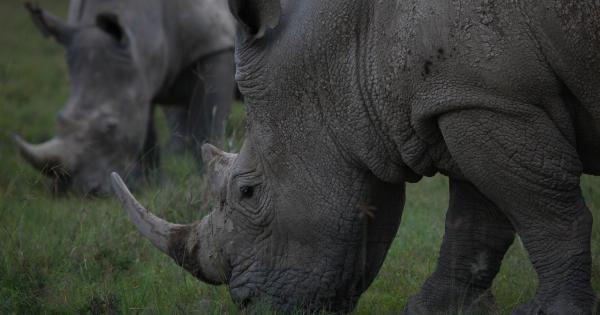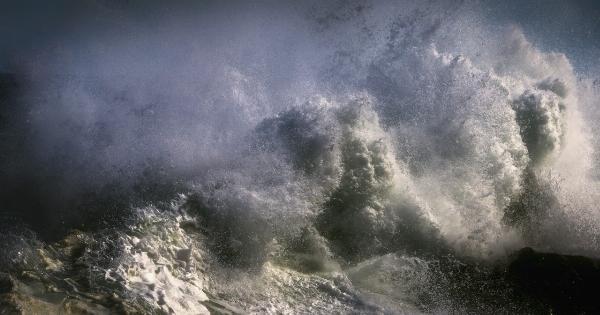The sea is a vast and mysterious place filled with fascinating creatures and stunning landscapes.
Covering more than 70% of the Earth’s surface, it is the largest ecosystem on our planet and plays a vital role in regulating our climate and weather patterns. In this comprehensive overview, we will explore the many aspects of the sea, from its physical properties to the plants and animals that call it home.
The Physical Properties of the Sea
The sea is a unique environment in many ways. Its physical properties, such as temperature, salinity, and pressure, have a profound impact on the marine life that inhabits it. Let’s take a closer look at each of these properties:.
Temperature
The temperature of the sea varies depending on the location, season, and depth. Surface temperatures in the tropics can reach as high as 30°C (86°F), while near the poles, the temperature can drop to -1.8°C (28.8°F).
The temperature also changes with depth, as the sun’s rays penetrate the water and heat it up. However, beyond a depth of about 200 meters, the temperature begins to drop as the water becomes colder and denser.
Salinity
Salinity is a measure of the amount of dissolved salts in the water. The sea is naturally salty, with an average salinity of 35 parts per thousand (ppt). This means that for every 1 liter of seawater, there are 35 grams of dissolved salts.
However, salinity can vary depending on the location and the amount of freshwater entering the sea. For example, areas near the mouth of a river typically have lower salinity due to the influx of freshwater. In contrast, the Red Sea has a high salinity of 40 ppt due to its high evaporation rate and limited water exchange with the surrounding oceans.
Pressure
The pressure in the sea increases with depth due to the weight of the water above it. At the surface, the pressure is approximately 1 atmosphere (atm), which is equivalent to the pressure at sea level on land.
However, for every 10 meters (33 feet) of depth, the pressure increases by 1 atm. This means that at a depth of 100 meters (328 feet), the pressure is 11 atm, which is equivalent to the pressure at the bottom of a swimming pool.
The Plants and Animals of the Sea
The sea is home to a vast array of plants and animals, ranging from microscopic plankton to enormous whales. Let’s take a closer look at some of the most common and interesting creatures that inhabit the sea:.
Phytoplankton
Phytoplankton are tiny plants that float near the surface of the sea. They are the primary producers in the marine food chain, providing food and oxygen for other organisms.
Phytoplankton come in many shapes and sizes, from unicellular bacteria to multicellular diatoms and dinoflagellates.
Zooplankton
Zooplankton are tiny animals that also float near the surface of the sea. They feed on phytoplankton and are in turn eaten by larger animals. Some common types of zooplankton include copepods, krill, and jellyfish.
Fish
Fish are one of the most diverse groups of animals in the sea, with over 30,000 species found worldwide. They come in many shapes and sizes, from the tiny goby to the enormous whale shark. Some common types of fish include tuna, salmon, and cod.
Marine Mammals
Marine mammals are animals that have adapted to life in the sea. They include whales, dolphins, seals, and sea lions. These animals have evolved to breathe air, maintain body heat, and move through the water with great ease.
Coral Reefs
Coral reefs are underwater ecosystems that are home to a vast array of plants and animals. They are made up of millions of tiny coral polyps, which secrete a hard exoskeleton and form the structure of the reef.
Coral reefs are incredibly diverse and are home to over 25% of all marine species.
The Importance of the Sea
The sea plays a vital role in our planet’s ecosystem and has a significant impact on our daily lives. Here are just a few of the ways in which the sea is important:.
Climate Regulation
The sea plays a critical role in regulating our planet’s climate by absorbing and storing heat and carbon dioxide. This helps to stabilize our climate and prevent extreme temperature fluctuations.
Fisheries
The sea is an essential source of food for millions of people around the world. It provides a vital source of protein and nutrients and supports the livelihoods of millions of fishermen and their families.
Transportation
The sea is a vital transportation route for goods and people around the world. Over 90% of global trade is transported by sea, making it an essential part of our global economy.
Recreational Activities
The sea is also a source of recreation and enjoyment for countless people around the world. From swimming and surfing to fishing and sailing, the sea offers a wealth of activities for people of all ages.
Conclusion
The sea is a remarkable and endlessly fascinating environment that plays a critical role in our planet’s ecosystem.
From its physical properties to the plants and animals that call it home, the sea is a complex and intricate web of life that we are only just beginning to understand. As we continue to explore and learn more about the sea, we can better appreciate its importance and work to protect and preserve this precious ecosystem for generations to come.































